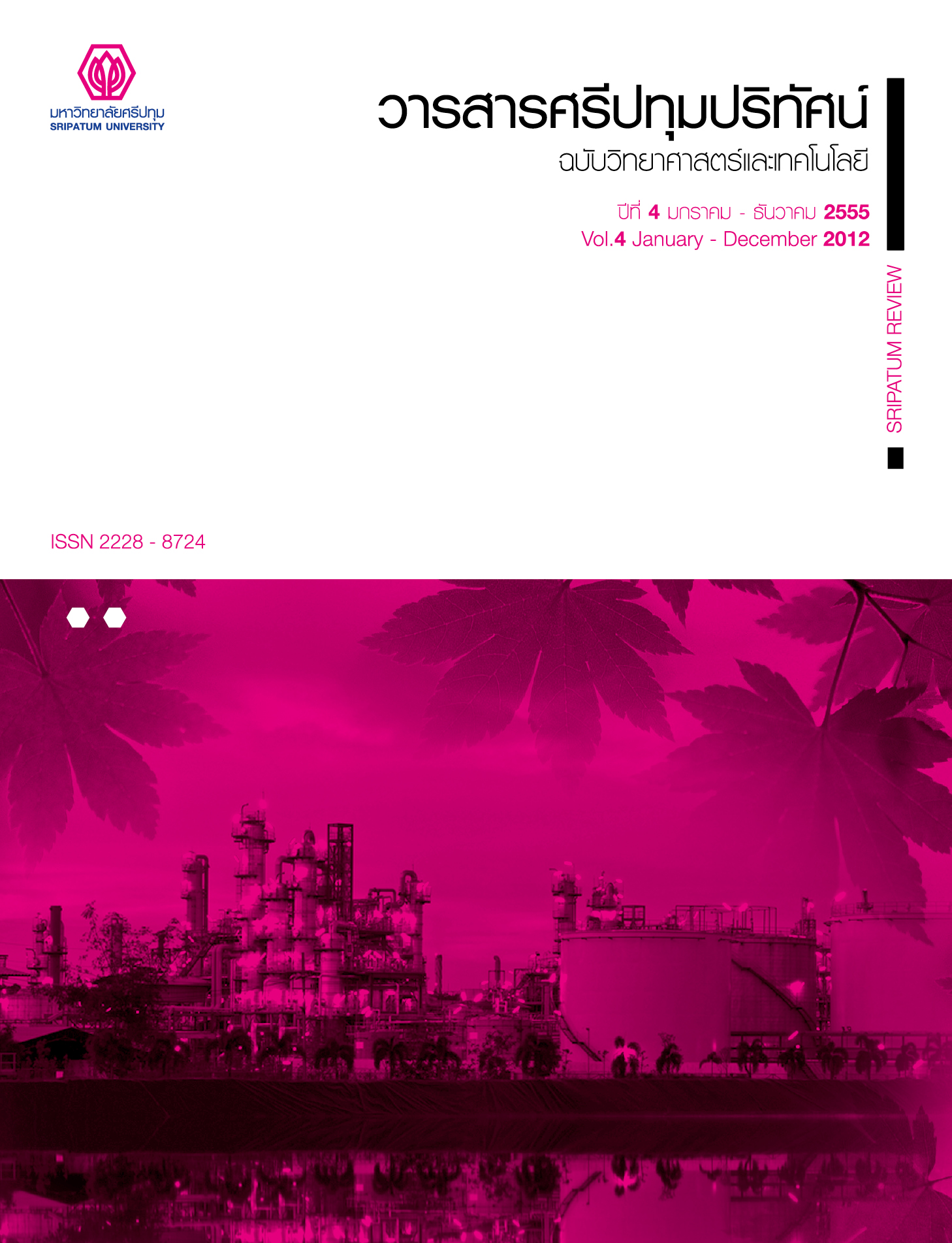A COMPARATIVE STUDY OF THE ADSORPTION EFFICIENCY OF GLYCERIN AND SUNFLOWER OIL OF LUFFA FIBER
Main Article Content
Abstract
The objective of this research was to study the adsorption of two types of moisturizers; glycerin and sunflower oil by luffa fibers. The samples of the luffa fibers were obtained from Mukdahan province. The samples were pretreated with sodium hydroxide (NaOH). The equilibrium time experiments: 0.25 g of dried luffa fibers were immersed into 50 mL of glycerin or sunflower oil with a concentration of 1 g/100 mL. The solutions were shaken for various times (0, 10, 20, 30, 60, and 120 minutes). Investigating the adsorption quantity of moisturizers by luffa fibers, 0.25 g of dried luffa fibers were immersed into 50 mL of glycerin or sunflower oil with different concentration levels (1, 2, 3, 4, 5, 10, 15, 30, 50 and 100 g/100 mL). The solutions were shaken for 60 minutes. The finding was that the equilibrium time for glycerin and sunflower oil were achieved at 40 and 60 minutes, respectively. For the finding revealed that luffa fibers had a greater ability to adsorb the amount of sunflower oil than glycerin. The findings of this study would be beneficial to evaluate the suitability and efficiency of adsorption of moisturizer by luffa fibers for the future application such as body scrub.
Article Details
References
Akhtar, N., Iqbal, J., and Iqbal, M. 2004. “Removal and recovery of nickel (II) from aqueous solution by luffa sponge-immobilized biomass of Chlorella sorokiniana: characterization studies.” Journal of Hazardous Materials, B108: 85-94.
Annunciado, T. R., Sydenstrickers, T. H. D., and Amico, S. C. 2005. “Experiment investigation of various vegetable fibers as sorbent materials for oil spills.” Marine Pollution Bulletin, 50: 1340-1360.
Demir, H., Top, D. A., Balkose, D., and Ulku, S. 2008. “Dye adsorption behavior of Luffa cylindrical fibers.” Journal of Hazardous Materials, 153: 389-394.
Ejikeme, P. M. 2008. “Investigation of the physicochemical properties of microcrystalline cellulose from agricultural wastes I: Orange mesocarp.” Cellulose, 15: 141–147.
Ghali, L., Msahli, S., Zidi, M., and Sakli, F. 2009. “Effect of pre-treatment of Luffa fibres on the structural properties.” Materials Letters, 63: 61-63.
Laidani, Y. 2011. “Use of fiber Luffa cylindrica for waters treatment charged in copper. Study of the possibility of its regeneration by desorption chemical.” Energy Procedia, 6: 381-388.
Ohwoavworhua, F. O., Kunle, O. O., and Ofoefule, S. I. 2004. “Extraction and characterization of microcrystalline cellulose derived from luffa cylindrica plant.” African Journal of Pharmaceutical Research and Development, 1, 1: 1–6.
Tanabe, V. O. A., Sydenstricker, T. H. D., Munaro, M., and Amico, S. C. 2005. “A comprehensive characterization of chemically treated Brazilian sponge-gourds (Luffa cylindrical).” Polymer Testing, 24: 474-482.
Zampieri, A., Mabande, P. T. G., Selvam, T., Schwieger, W., Rudolph, A., Hermann, R., Sieber, H., and Greil, P. 2006. “Biotemperating on Luffa cylindrical sponges to self-supporting hierarchical zeolite macrostructures for bio-inspired structured catalytic reactors.” Materials Science and Engineering, C26: 130-135.


